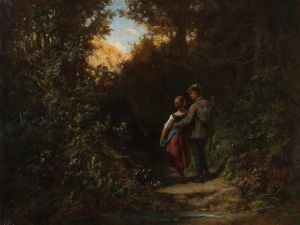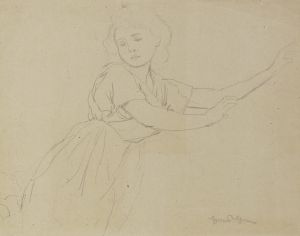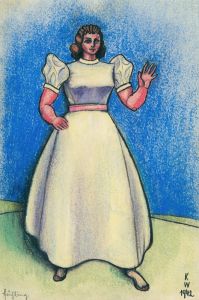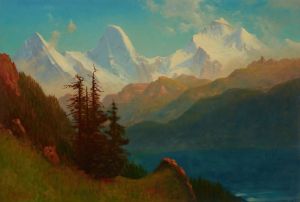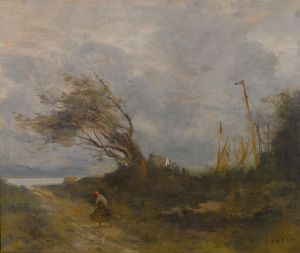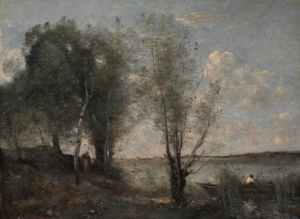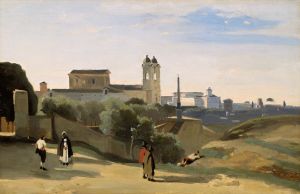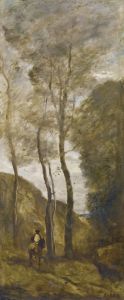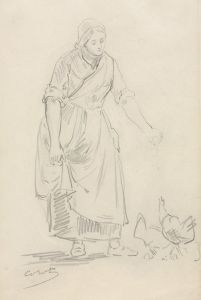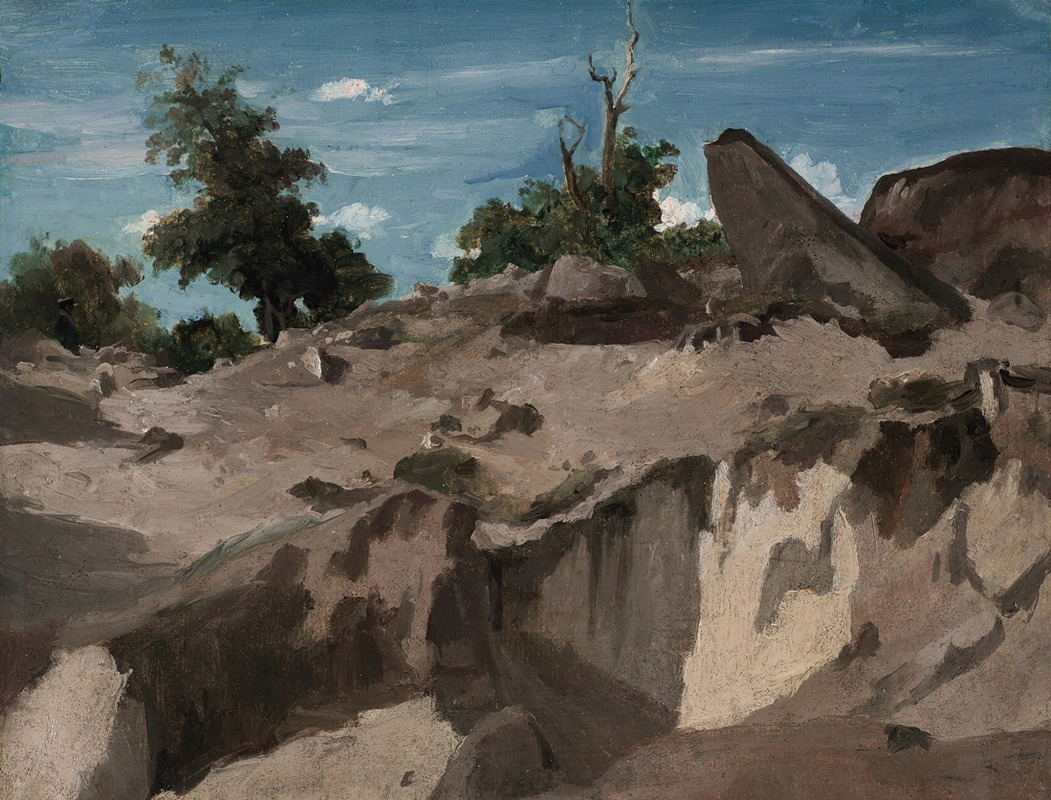
Forêt de Fontainebleau – Au plateau brûlé
A hand-painted replica of Jean-Baptiste-Camille Corot’s masterpiece Forêt de Fontainebleau – Au plateau brûlé, meticulously crafted by professional artists to capture the true essence of the original. Each piece is created with museum-quality canvas and rare mineral pigments, carefully painted by experienced artists with delicate brushstrokes and rich, layered colors to perfectly recreate the texture of the original artwork. Unlike machine-printed reproductions, this hand-painted version brings the painting to life, infused with the artist’s emotions and skill in every stroke. Whether for personal collection or home decoration, it instantly elevates the artistic atmosphere of any space.
Jean-Baptiste-Camille Corot was a pivotal figure in the development of landscape painting in the 19th century, bridging the gap between the traditions of the Old Masters and the innovations of the Impressionists. One of his notable works is "Forêt de Fontainebleau – Au plateau brûlé," which exemplifies his mastery in capturing the essence of nature.
Corot was born in Paris in 1796 and began his artistic career relatively late, at the age of 26. He was part of the Barbizon School, a group of painters who sought to break away from the formalism of the academic tradition and instead focused on painting en plein air, or outdoors, to capture the natural world more authentically. The Forest of Fontainebleau, located southeast of Paris, was a favored location for these artists due to its diverse landscapes and natural beauty.
"Forêt de Fontainebleau – Au plateau brûlé" is a testament to Corot's skill in depicting the subtleties of light and atmosphere. The painting captures a scene within the forest, likely focusing on an area that had been affected by fire, as suggested by the title "Au plateau brûlé," which translates to "At the Burnt Plateau." This aspect of the landscape would have presented a unique challenge and opportunity for Corot to explore the interplay of light and shadow on the charred terrain.
Corot's technique involved the use of soft, muted colors and delicate brushwork, which allowed him to convey a sense of tranquility and timelessness in his landscapes. In "Forêt de Fontainebleau – Au plateau brûlé," these qualities are evident in the way he renders the trees and the forest floor, creating a harmonious composition that invites the viewer to contemplate the serene beauty of the natural world.
Throughout his career, Corot was known for his ability to balance realism with idealism. While his landscapes were grounded in the observation of nature, he often infused them with a poetic quality that transcended mere representation. This approach is evident in "Forêt de Fontainebleau – Au plateau brûlé," where the scene is both a faithful depiction of a specific location and a reflection of Corot's personal vision of nature.
Corot's influence on later artists, particularly the Impressionists, cannot be overstated. His emphasis on capturing the effects of light and atmosphere, as well as his practice of painting outdoors, were foundational to the development of Impressionism. Artists such as Claude Monet and Camille Pissarro admired Corot's work and were inspired by his innovative approach to landscape painting.
"Forêt de Fontainebleau – Au plateau brûlé" remains an important work within Corot's oeuvre, showcasing his ability to convey the beauty and complexity of the natural world. It stands as a testament to his enduring legacy as a master landscape painter and a key figure in the transition from traditional to modern art.





